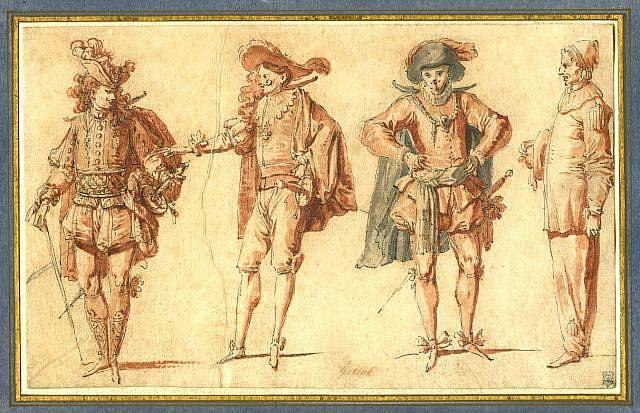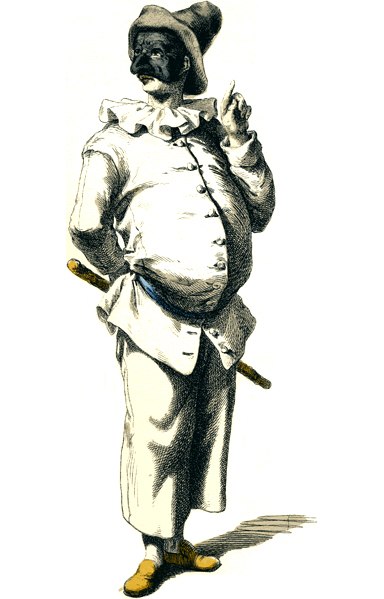Zanni, Zani or Zane is a character type of commedia dell'arte best known as an astute servant and a trickster. The Zanni comes from the countryside and is known to be a "dispossessed immigrant worker". Through time, the Zanni grew to be a popular figure who was first seen in commedia as early as the 14th century. The English word zany derives from this character. The longer the nose on the characters mask, the more foolish the character.
Sketch of Harlequin, a popular Zanni character
A leather version of a Zanni mask, profile view
Zanni (Jacques Callot)
Commedia dell'arte was an early form of professional theatre, originating from Italian theatre, that was popular throughout Europe between the 16th and 18th centuries. It was formerly called Italian comedy in English and is also known as commedia alla maschera, commedia improvviso, and commedia dell'arte all'improvviso. Characterized by masked "types", commedia was responsible for the rise of actresses such as Isabella Andreini and improvised performances based on sketches or scenarios. A commedia, such as The Tooth Puller, is both scripted and improvised. Characters' entrances and exits are scripted. A special characteristic of commedia is the lazzo, a joke or "something foolish or witty", usually well known to the performers and to some extent a scripted routine. Another characteristic of commedia is pantomime, which is mostly used by the character Arlecchino, now better known as Harlequin.
A commedia dell'arte street play during the Carnival of Venice
Commedia dell'arte Troupe on a Wagon in a Town Square by Jan Miel (1640)
Claude Gillot (1673–1722), Four Commedia dell'arte Figures: Three Gentlemen and Pierrot, c. 1715
Pulcinella, drawn by Maurice Sand







